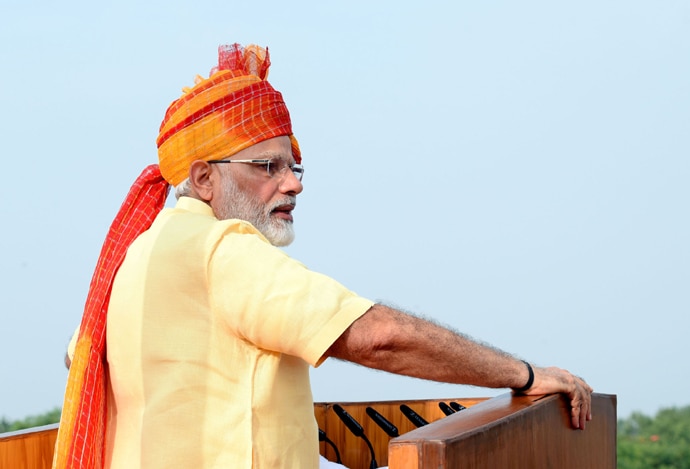Lok Sabha and beyond: How the Ram Mandir issue could help the squabbling Shiv Sena and BJP form an alliance

When Shiv Sena chief Uddhav Thackeray started addressing the party's Ram Mandir 'mahayadnya' at Pandharpur in Maharashtra, what the crowd wanted to hear about was the Shiv Sena’s stand on the issue of onion farmers who have been struggling to get the bare minimum price for their produce.
The crowd started shouting "Onions!" and Uddhav finally had to calm them down by explaining that first, he will speak about the Ram Mandir and only then, about the farmers' plight. The whole meeting was to target the BJP over the Ram Mandir issue but Uddhav had to speak about issues like drought, minimum support prices for farm produce and of course, farm loan waivers too.
This clearly shows that at least in Maharashtra's rural districts, farmers are more concerned about what the government is doing for their future and a little less about if and when the Ram Mandir will be built.
Yet, Uddhav Thackeray remains focused on this issue.

It appears that the Ram Mandir has become necessary for the Shiv Sena to maintain pressure on the BJP if an alliance deal is to be struck before the 2019 Lok Sabha elections. In the same rally, Uddhav raised questions over the alliance in Bihar where the BJP has bent down to accept five seats less than what they won in 2014 to broker a deal with Nitish Kumar and Ram Vilas Paswan.
It was Uddhav, and the Shiv Sena mouthpiece Saamana, which had raised questions over the BJP leadership’s ability to run the NDA after Nitish Kumar decided to break away before the 2014 Lok Sabha elections by refusing to work with Narendra Modi. Now that Nitish is back in the NDA fold, Uddhav Thackeray has dared the BJP to ask Nitish and Paswan their stand on the Ram Mandir issue.
The Shiv Sena was hinting at the NDA of 1998-99 and 2004 when, in an attempt to accommodate George Fernandes, the BJP gave up on much of its core agenda despite the Shiv Sena’s opposition. Even the Sena had remained silent over these issues as the NDA government under Atal Bihari Vajpayee gave enough space to its alliance partners.
Now that the RSS has upped its ante on the issue, the Shiv Sena doesn’t want to be left behind – especially when the party leadership knows that it is in a position of power.
What happened in Bihar has given them more confidence and now, it wants to finalise an alliance for the Assembly polls as well.
They could have more bargaining power if the Maharashtra Assembly elections are conducted along with the Lok Sabha elections.
After all, the Shiv Sena knows well that the BJP does not need it for the Assembly elections scheduled to be conducted only six months after the upcoming Lok Sabha polls. They know that if the BJP comes back to power in the centre, they won't think twice about breaking the alliance for the state polls — as they did in 2014.
So, the Shiv Sena wants that if an alliance has to take place, it needs to happen for both the elections.

But even then, the numbers are not in favour of a seat-sharing arrangement between the two parties as the BJP will need to make a lot of concessions.
In the Assembly of 288 seats, the BJP has 123 MLAs. Even if both parties agree to 50-50 seat sharing, the BJP will end up getting 144 seats, which is just 21 seats more than what they won in 2014.
The Shiv Sena wants that the BJP should share seats with alliance partners like the RPI and other smaller parties from their quota – a proposition that would not go down well with the BJP. On the other hand, the NCP and Congress alliance is almost sealed and the BJP knows it that the Shiv Sena and the BJP working separately will not be able to take on the alliance.
It will also be difficult for the Shiv Sena which, during the last four years, crossed many a limit and acted more like a ‘true’ opposition party. It opposed the Modi government on all important decisions, from demonetisation to GST. In fact, in the Pandharpur speech, Uddhav Thackeray even repeated the ‘chowkidar chor hai’ jibe and raked up the Soharabuddin case to attack the Modi-Shah duo.
As such, to turn back from this point to seal an alliance with the BJP will not be an easy task, and so, he has kept his cards close to his chest.
It appears to be the reason why the Ram Mandir – a dead issue as far as Shiv Sena’s rural electorate is concerned – is being picked up by Uddhav and his leaders. This is the only issue which can finally give both parties a reason to come together.

Even as Uddhav asked how the BJP could decide to go with Nitish Kumar who had given the call for a ‘sangha-mukt’ Bharat (RSS-free India), he has kept his doors open for alliance talks.
Till last year, Maharashtra had seen a battle between the Shiv Sena and the BJP. Bitter salvos were fired from both sides. None of Uddhav Thackeray or Shiv Sena leaders' statements against PM Modi or Devendra Fadanavis government went unanswered by the BJP – and were returned with equally critical attacks on the Sena leadership.
Yet, despite Uddhav’s fresh salvos, the BJP leadership is patiently silent and the Shiv Sena knows they will bend even further – as they did in Bihar.
The Ram Mandir issue could well be the medium which guides both the parties to come to terms and forge an alliance.

